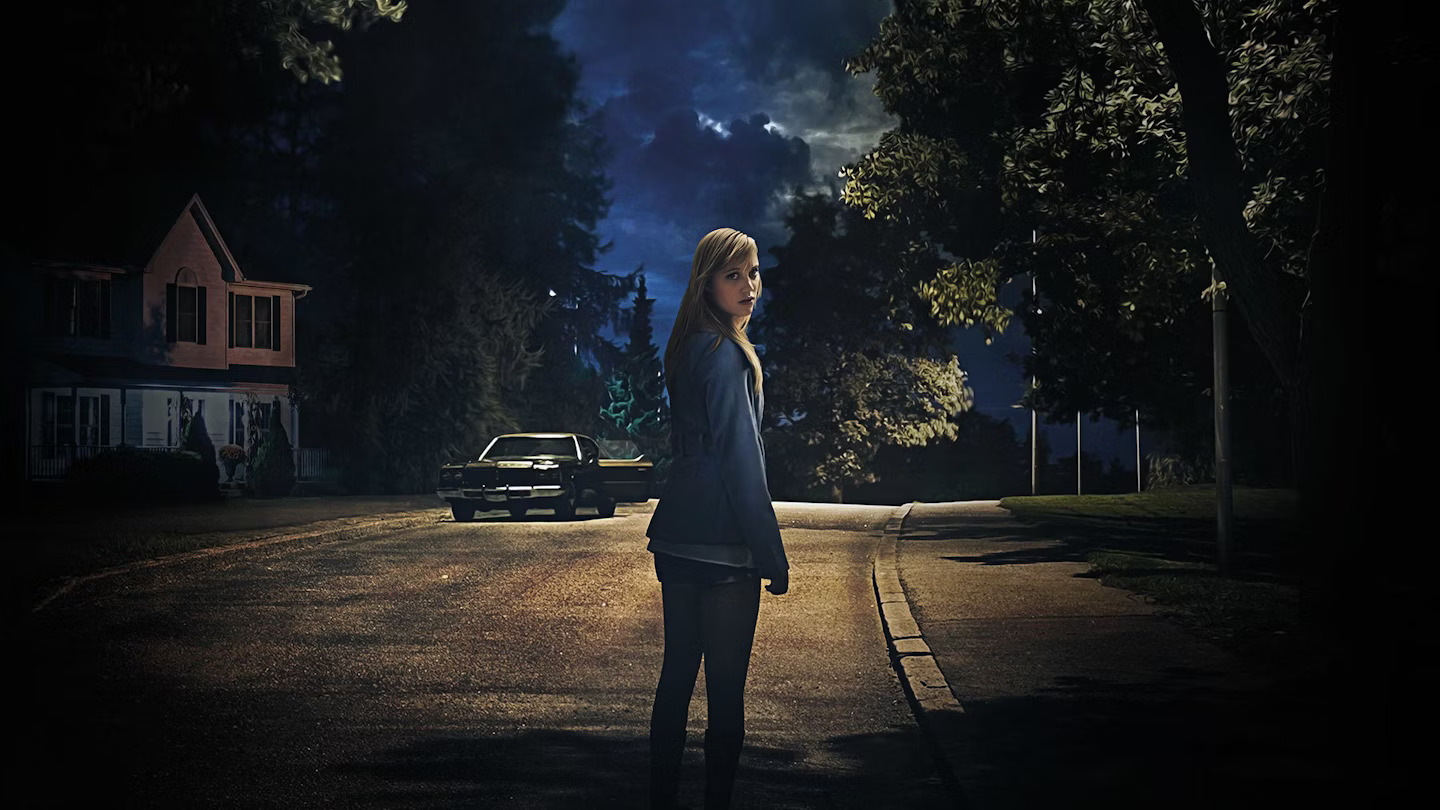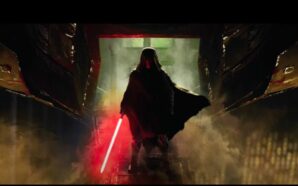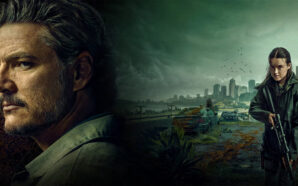I grew up in a period of bad horror movies. I used to think I didn’t like the genre because the offering at the cinema was almost always terrible. Becoming a teenager, testing out the genre, all that was available were endless torture porn sequels, vacuous remakes, or whatever number of Paranormal Activity they were up to. I saw and enjoyed a few classic horror films but thought the genre was dead and largely uninteresting. But then, 10 years ago this year, when I was eighteen, I went to see It Follows and my opinion drastically changed. I finally got it; I became a horror fan.
With the film hitting this anniversary, plus an announcement that a sequel is in development, I purchased the new 4K Blu-Ray from Second Sight Films and found It Follows to be just as brilliant as I did a decade ago. It’s one of the key films that ushered in the era of A24-produced ‘elevated horror’, and while I don’t like that term and the subgenre can drift towards pretentiousness, horror is in a much better state now than it was when I was growing up.
After a sexual encounter with her new boyfriend, Jay (Maika Monroe) finds herself followed by an unstoppable malevolent force that can take the form of anyone, stranger or loved one, as it walks towards its victim. It’s a simple concept but one brimming with additional themes and layers. The most basic, popular reading is that the curse is a metaphor for an STD but I find that far too simple. It runs much deeper. It’s a film about adulthood and the loss of childlike innocence. All the characters are on the threshold of adulthood and now they are caught in its inescapable pull, the relentless existential march towards growing up, personified by this entity of sex and death. Early in the film Jay talks about her childhood dream of what being an adult would be like and now she meets the terrifying reality. She said she wanted freedom but now sees aging as nothing but a trap.
Once this idea was in my head I saw it everywhere. The first shot after the prologue is of torn wrapping paper in the street and a pan up to reveal an old game of hopscotch etched on the sidewalk: the forgotten detritus of childhood. For the first half of the film Jay and her friends act like children. She’s comforted with ice cream and sprinkles when she’s worried and the first place she thinks to flee to is the park to sit on the swings. When all the young adults get together to discuss this sex curse they sit in a backyard in a circle, cross-legged, drinking from cans with straws to make them look like juice boxes.
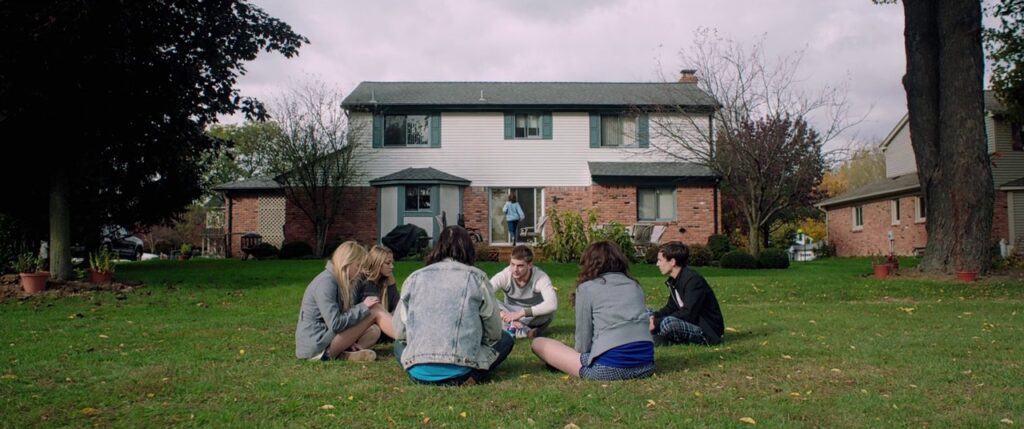
Maika Monroe seems to be affecting a slightly higher voice throughout, making her sound younger, like a little girl. Jay’s friend Paul recalls finding porno mags as a kid, a formative experience, and then finds more later in the film and sits on the floor looking at them like that young kid again. The worlds of childhood and adulthood collide throughout the film, in ways both big and small, with messy, traumatising results. Watching the film for the first time at eighteen, I was the perfect age for it. It Follows is so evocative of that threshold between child and adult that is far narrower and briefer than you expect.
The monster, whatever it is, is purposefully sexual. It often takes the form of naked people, including one victim’s mother, which just adds a whole other layer of sexual confusion. Not to mention the highly sexual manner in which it kills. The comparisons between losing one’s virginity and being burdened by this curse is perhaps the least subtle aspect of the film, but it works well. Highlighting the shift from innocent childhood actions to more pregnant adult ones, Paul, desperately in love with Jay, says “I haven’t spent the night here since we were kids” and the two ultimately sleep together: Paul’s first time with anyone. Jay’s line “do you feel any different?” relates to both him losing his virginity and getting the curse passed to him.
The thresholds aren’t just abstract metaphorical ones but very literal, physical ones, too. The film is set in Detroit, and much is made of the abandoned buildings and societal collapse. In this regard, It Follows would make for a perfect triple bill with Don’t Breathe and Barbarian. The character of Yara says that as a kid she wasn’t allowed to go past Eight Mile. Now to defeat the curse she and her friends, truly becoming adults, are passing that threshold and entering the forbidden land.
Jay however seems to have spent longer in this netherzone between childhood and adulthood than her friends, forced into it by her father’s death. The film does such a great job subtly showing her father’s absence and the problems at home it seems to have caused. Jay’s mother is largely absent, having to work every waking moment, and we never get a clear shot of her face. There are wine bottles and an ashtray in the mother’s room, and a neighbour states “those people are such a mess.” One of the most striking images in the film is Jay lining up blades of grass on her leg. It might just be an innocuous detail, a childlike distraction, or a reference to self-harm, with the blades looking like cuts on her thigh. Jay’s father is revealed in a photograph at the end of the film and we realise the entity had previously taken his form, getting a reaction from Jay when she refuses to describe it to her sister. Is taking that form merely a trick to get close to Jay or a deeper, personal attack on her father’s character and death?
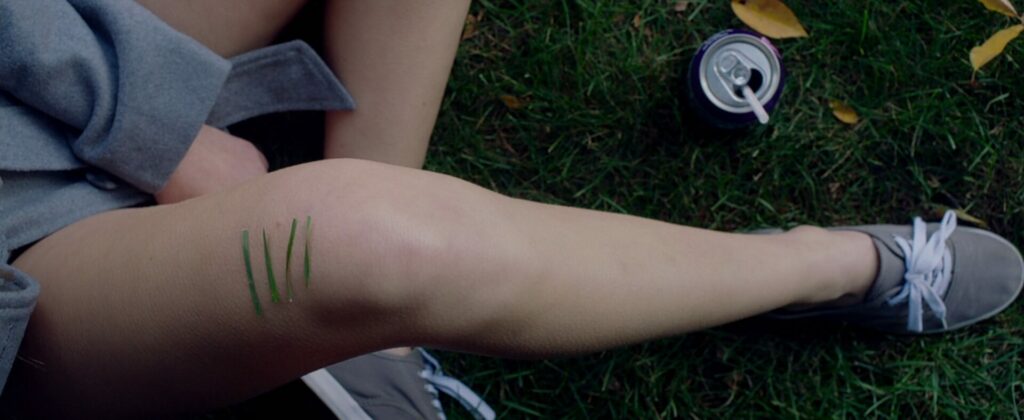
Another key theme that recurs in the film is the presence of pools and water. Water can be calming, amniotic, womb-like, but also dangerous and deadly. Jay is introduced in her backyard pool. It’s a peaceful, calm scene where she seems to be in touch with the nature around her, yet it’s revealed she is being watched lecherously by some neighbourhood youths. Yara states “I haven’t been to the pool since I was 14.” She doesn’t answer when asked who took her there, as if something happened she doesn’t want to talk about. Jay’s sister Kelly reveals the pool is where she had her first beer. The pool seems to symbolise the transition into adulthood, a baptism of some kind.
The big final(?) confrontation with the entity takes place in an abandoned pool, a scene which reminded me of the scariest episode of Are You Afraid of the Dark? The water theme continues into the very next scene where it is raining and the drops on the window are reflected across all the walls of Jay’s room, as if it is inescapable and she is now continuously, metaphorically submerged. Earlier in the film there’s an ambiguous moment where Jay swims towards a boat with three mean aboard. Does she sleep with them to delay the curse finding her or not? The pool in her yard is damaged and empty when she returns. Could this be a symbol of her destroyed virtue and innocence?
But, like a pool, It Follows has a deep end and a shallow end. I can discuss themes and ideas but it’s a horror film: is it scary? Absolutely. It’s a very creepy film that taps into an ingrained human terror. Much of the fear comes from being followed and watched, constant paranoia, and never being able to rest. Even when there’s nothing there the film has you scanning the horizon, looking for something just out of view, because you know, eventually, it will catch up with Jay. I always find people slowly emerging from the shadows to be far scarier than a jump scare, like that naked guy at the end of Hereditary, and It Follows has several scares like that. The direction and camerawork perfectly fits the premise, with long, wide shots of locations that have you peering into the background, and 360 degree shots with the camera slowly spinning, enforcing that the entity could be coming from any direction, could be anyone.
The film has an eighties vibe, referencing Halloween in a couple of scenes, but is also oddly timeless. It’s impossible to place exactly when these events are occurring, making the film almost dreamlike in some instances. Jay uses two old TVs stacked on top of each other to watch black-and-white B-movies, there are few modern cars, and characters even use landline phones. Pointedly, the only modern technology is a strange cell phone/e-reader shaped like a clam shell, a ‘shell phone’, which only confuses things further. It’s bizarre but I love it. The synth soundtrack by Disasterpeace is also inspired by eighties John Carpenter movies and is absolutely brilliant. I used to listen to it while waiting for the bus home in the dark, which is not recommended for the faint of heart.
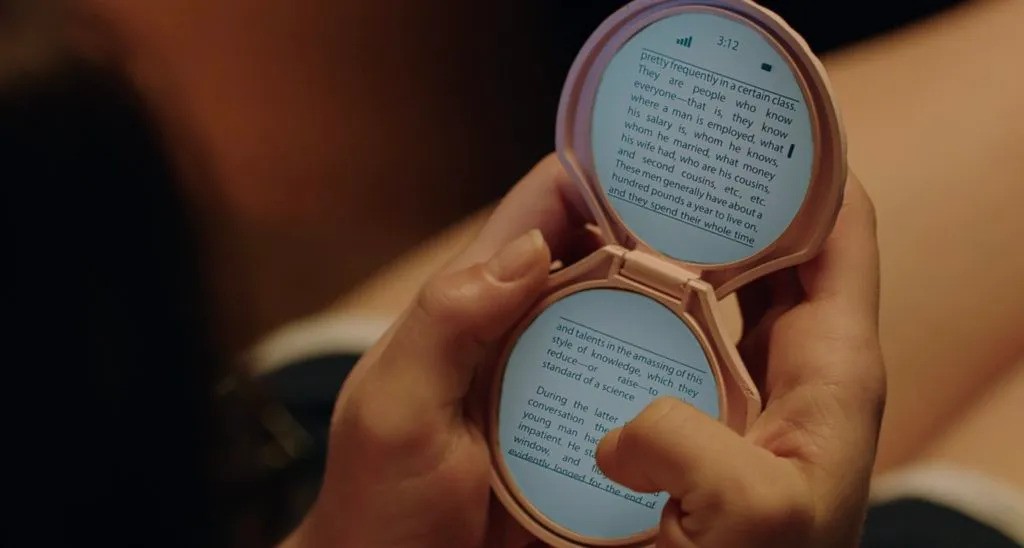
The ending of It Follows offers as much closure as one could hope from this situation: very little. While the literal ending might disappoint some viewers, the thematic ending is strong and I interpret it to be very bleak and cynical. Jay and Paul finally get together but any genuine affection between them seems to have evaporated. They’ve been forced together by the situation. They’ve had sex and now have to live with the consequences. It almost feels more like a metaphor for pregnancy than anything else as the credits roll. They enter this new adult stage of their lives together, grimly, with full awareness they can only hold off the inevitable for so long. The constant slow march of death will catch them eventually.
My appreciation for the depth within It Follows has grown these past ten years but nothing will top the very visceral horror I felt when I was eighteen and how personally I connected to the characters teetering on the edge of full-blown adulthood. Sat there watching the film I noticed that my friend’s mother was sat in front of me, clearly on a date with a man who was not her husband, and she noticed me. A couple of days later I heard that she had just then broken up with her husband and I’ve always suspected that it was me seeing her with that other man that forced the break-up, in case I revealed the affair. I had my own awkward, dark brush with adult relationships while watching It Follows for the first time and it scared the hell out of me.




